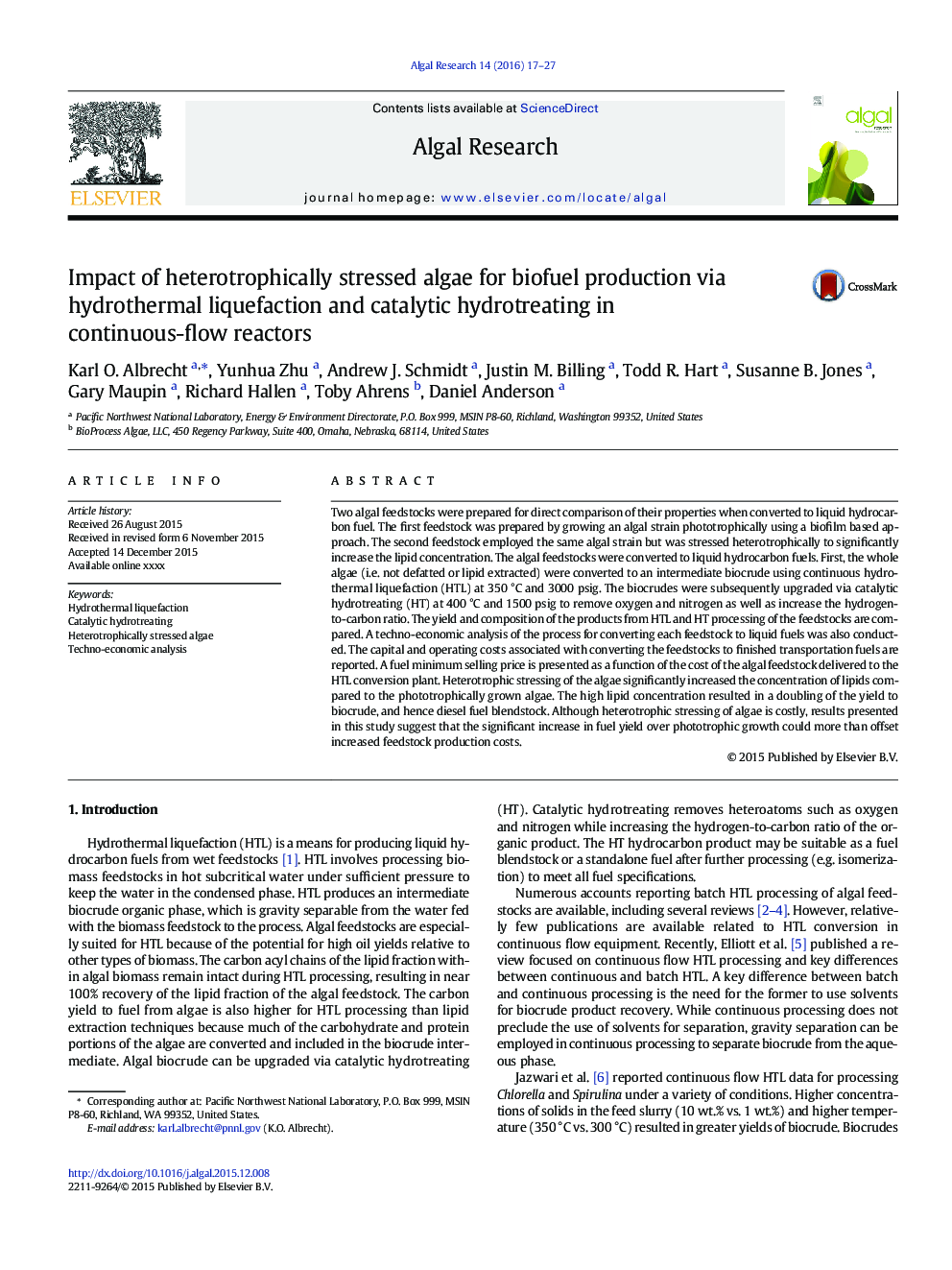| Article ID | Journal | Published Year | Pages | File Type |
|---|---|---|---|---|
| 8087400 | Algal Research | 2016 | 11 Pages |
Abstract
Two algal feedstocks were prepared for direct comparison of their properties when converted to liquid hydrocarbon fuel. The first feedstock was prepared by growing an algal strain phototrophically using a biofilm based approach. The second feedstock employed the same algal strain but was stressed heterotrophically to significantly increase the lipid concentration. The algal feedstocks were converted to liquid hydrocarbon fuels. First, the whole algae (i.e. not defatted or lipid extracted) were converted to an intermediate biocrude using continuous hydrothermal liquefaction (HTL) at 350 °C and 3000 psig. The biocrudes were subsequently upgraded via catalytic hydrotreating (HT) at 400 °C and 1500 psig to remove oxygen and nitrogen as well as increase the hydrogen-to-carbon ratio. The yield and composition of the products from HTL and HT processing of the feedstocks are compared. A techno-economic analysis of the process for converting each feedstock to liquid fuels was also conducted. The capital and operating costs associated with converting the feedstocks to finished transportation fuels are reported. A fuel minimum selling price is presented as a function of the cost of the algal feedstock delivered to the HTL conversion plant. Heterotrophic stressing of the algae significantly increased the concentration of lipids compared to the phototrophically grown algae. The high lipid concentration resulted in a doubling of the yield to biocrude, and hence diesel fuel blendstock. Although heterotrophic stressing of algae is costly, results presented in this study suggest that the significant increase in fuel yield over phototrophic growth could more than offset increased feedstock production costs.
Related Topics
Physical Sciences and Engineering
Energy
Renewable Energy, Sustainability and the Environment
Authors
Karl O. Albrecht, Yunhua Zhu, Andrew J. Schmidt, Justin M. Billing, Todd R. Hart, Susanne B. Jones, Gary Maupin, Richard Hallen, Toby Ahrens, Daniel Anderson,
